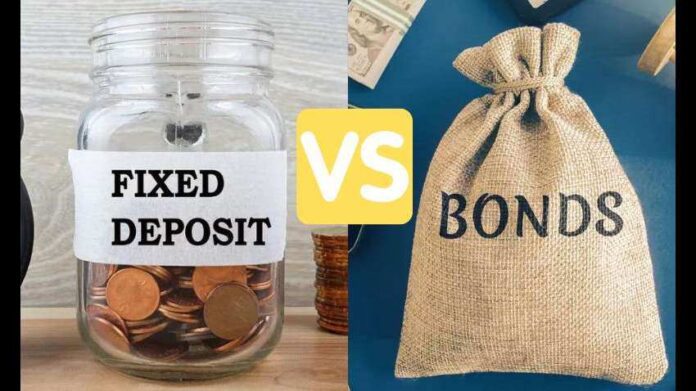Bank FD vs RBI Bond: RBI’s Floating Rate Savings Bond (FRSB) gives very good returns. This is a great investment option for those who want to invest money in some other safe scheme instead of bank FD. Know the advantages and disadvantages of both along with the interest rate.
Bank FD vs RBI Bond: RBI’s Floating Rate Savings Bond (FRSB) is a reliable option for investors who want government guarantee and safe returns. Currently, it is offering an attractive interest rate of 8.05%. However, there are investment terms and lock-in period, which is important to understand.
1. What is RBI Floating Rate Savings Bond (FRSB)?
This is a government bond, which comes with 100% sovereign guarantee. The investor in it has no risk of default. It is specially designed for those who want safe investment.
2. What is the current interest rate?
FRSB is currently paying an annual interest of 8.05%. This rate is based on NSC and is reset every six months. That means if the interest rates change, you will also get the impact.
3. How is the interest rate decided?
The coupon rate of this bond is linked to the rate of NSC. This rate is decided by adding a spread of 0.35% to the interest on NSC. Because of this, it is considered more attractive than FD.
4. Lock-in period and liquidity
For most investors, this bond has a lock-in of 7 years. That means it is not possible to withdraw money before maturity. Only senior citizens get the facility of early exit with certain conditions.
5. Relief for senior citizens
Investors above 60 years of age have partial flexibility in this bond. They can withdraw money in 4 to 6 years depending on their age. However, there will be a penalty on early withdrawal.
6. Taxation rules
The interest earned on FRSB is fully taxable. It will be added to your income tax slab. If the interest earned in a year is more than ₹10,000 then TDS will also be deducted.
7. Comparison between FD and FRSB
Most banks are currently giving 6-7% interest on FD. Some small finance banks give up to 9%, but there is no government guarantee. In such a situation, FRSB becomes an option for safe and better returns.
8. For whom is it the right choice?
This bond is best suited for those who want stable and safe returns. For those who want liquidity of money, FDs will be more convenient. That is, the investor should make a choice based on his priority.


